The term “Canaanites” in the Old Testament was normally applied to the inhabitants of the lower coastal regions of the Land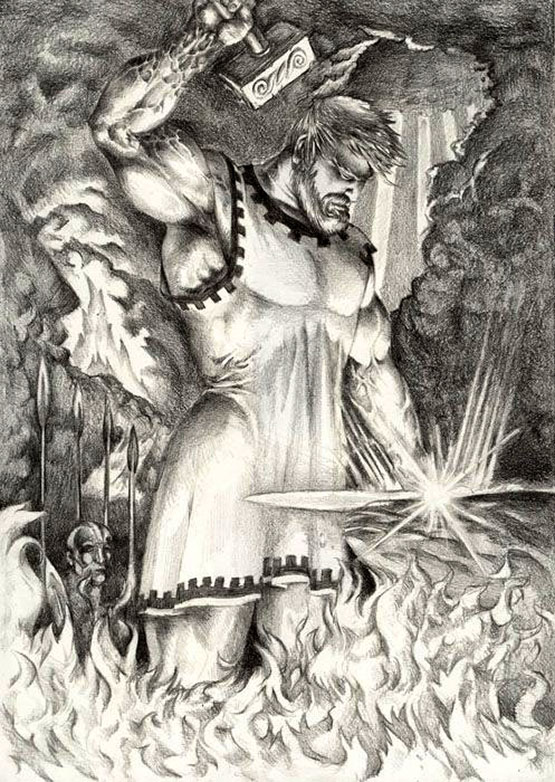 of Canaan, as opposed to the inhabitants of the mountainous regions like that of the Amorites, who are often referred to in the bible as “certain highland mountaineers in the Land of Canaan.”
of Canaan, as opposed to the inhabitants of the mountainous regions like that of the Amorites, who are often referred to in the bible as “certain highland mountaineers in the Land of Canaan.”
The name Amorite is regarded as synonymous with “Canaanite”—only “Amorite” is never used for the population on the coast. They are described as a powerful people of great stature “like the height of the cedars” (Amos 2:9). By the time of the Second Temple, “Canaanite” in Hebrew had come to be not an ethnic designation, so much as a general synonym for “merchant”, as it is interpreted in, for example, Job 40:30, or Proverbs 31:24. (Wikipedia) Hence, when we see various tribes such as the Amorites and Canaanites, we must not immediately assume that they are of a different race from one another, as I will explain below. You can also read more about the Amorites in this article link I had written last year.
The term applied to these people, such as the name ‘Canaanites, was to distinguish this race as a class of merchants which can be discovered in the etymology of the name. Another spelling for Canaanite is ‘Kenite.’ The meaning of the word Kenite is “smith,” which is a worker in metal. This corresponds with the bible that says the Kenites were coppersmiths and metalworkers. Moses’ father-in-law, Jethro, was a shepherd and a priest in the land of Midian. Judges 1:16 says that Moses had a father-in-law who was a Kenite. Jethro is from the Hebrew name יִתְרוֹ (Yitro), which was derived from the Hebrew word יֶתֶר (yeter) meaning “abundance”.’
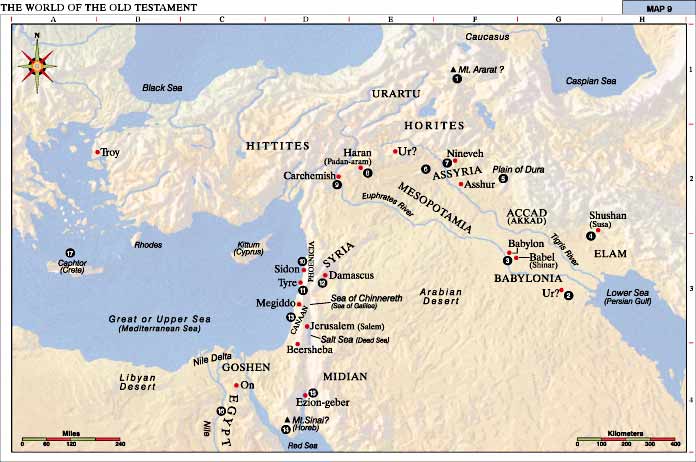 The Amorites were the same people as the biblical Canaanites, and their home, the Land of Canaan is the home of what we can safely say is the land of the merchants. It is described as a massive area that bordered from Sidon, to Gerar, unto Gaza; as thou goest, unto Sodom, and Gomorrah, and Admah, and Zeboim, even unto Lash, and it was also composed of the five seas of the Land of Canaan which were the Mediterranean or the Great Sea, the Dead Sea, the Sea of Tiberias, the Samorchonite Sea or Lake, and the Sea of Jazer. Hence, the Land of Canaan gave birth to almost all the area nations and cities of this region surrounding these five large seas.
The Amorites were the same people as the biblical Canaanites, and their home, the Land of Canaan is the home of what we can safely say is the land of the merchants. It is described as a massive area that bordered from Sidon, to Gerar, unto Gaza; as thou goest, unto Sodom, and Gomorrah, and Admah, and Zeboim, even unto Lash, and it was also composed of the five seas of the Land of Canaan which were the Mediterranean or the Great Sea, the Dead Sea, the Sea of Tiberias, the Samorchonite Sea or Lake, and the Sea of Jazer. Hence, the Land of Canaan gave birth to almost all the area nations and cities of this region surrounding these five large seas.
THE HITTITES AND EGYPTIAN MERGE TO BECOME THE PHOENICIANS AND CANAANITES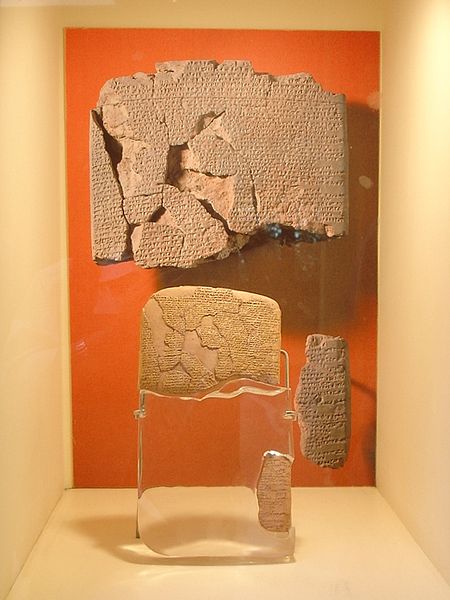
You will find, the Amorites in the Old Testament are often associated with another tribe called the Hittites. In fact, these tribes had merged under the banner of ‘Jerusalem‘ as seen in Ezekiel (xvi. 3, 45) where it is written, “the mother of Jerusalem was a Hittite, and its father an Amorite.”Meaning, the tribes of the Amorites and Hittites had merged under the new banner of Jerusalem. According to the Biblical tradition, King David established the city as the capital of the united Kingdom of Israel, and his son, King Solomon commissioned the building of the First Temple. In Ezekiel 16:1, Jerusalem is said to be the daughter of a Hittite mother and an Amorite father, sister of Samaria and Sodom. A century later, Ezra is dismayed to learn on his arrival from Babylon, that the leaders who had remained on the land had been “polluted” by mixing with other people, including the Hittites. (Wikipedia)
In the Talmud, the Samaritans are called Cutheans (Hebrew: כותים, Kutim). The Cutheans were from ‘Cuthah’ which was one of several cities from which people were brought to Samaria. A colony of Cutheans (Samaritans) had settled in Crete, whose priests were the ancient Curetes, and in the bible, the Samaritan Levites. As I stated above, the island we know of as Crete today was called Keftiu in the Ancient Egyptian texts and Kaftor, or Caphtor in the Old Testament. Today, the Samaritans refer to themselves as Bene Yisrael (“Children of Israel“). They claim to descend from the Biblical Israelite tribes of Ephraim, Menashe and Levi.
I wrote about this ancient Brotherhood of two races mixing, or what Erza said “polluting”, and their gigantic empires merging 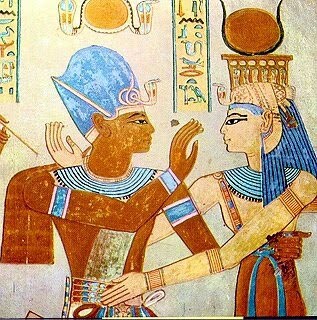 into one during the time of Ramesses II, in articles such as The Hittite and Egyptian Brotherhood – Part I, and Israel – Hittites Become One Heart and One Soul with Egypt. In these articles, I explain a peace treaty that was concluded between Egyptian Pharaoh Ramesses II and Hittite King Hattusili III. A treaty that may very well be the forming of Israel, where it is witnessed that the Egyptians and Hittites had made an “eternal treaty” of “peace and brotherhood for all time.” These pledges of brotherhood and peace can be seen in the first line of this peace treaty that says, “Ramesses, Beloved of Amon, Great King, King of Egypt, hero, concluded on a tablet of silver with Hattušiliš, Great King, King of Hatti, his brother”, and later in the tablet saying, “Ramesses II agreed to provide support to Hattušiliš’ successors in order to hold the Hittite throne.”
into one during the time of Ramesses II, in articles such as The Hittite and Egyptian Brotherhood – Part I, and Israel – Hittites Become One Heart and One Soul with Egypt. In these articles, I explain a peace treaty that was concluded between Egyptian Pharaoh Ramesses II and Hittite King Hattusili III. A treaty that may very well be the forming of Israel, where it is witnessed that the Egyptians and Hittites had made an “eternal treaty” of “peace and brotherhood for all time.” These pledges of brotherhood and peace can be seen in the first line of this peace treaty that says, “Ramesses, Beloved of Amon, Great King, King of Egypt, hero, concluded on a tablet of silver with Hattušiliš, Great King, King of Hatti, his brother”, and later in the tablet saying, “Ramesses II agreed to provide support to Hattušiliš’ successors in order to hold the Hittite throne.”
The Hittite King’s wife was a Babylonian Princess named Puduhepa . Ramesses married this Hittite/Babylonian daughter, and conferred upon her an Egyptian name, Maathorneferure. Years later he married another Hittite princess, and from these marriages would possibly come to be a new mixed race of children that would now be known to the world in the bible as the new Israel, and their people, the Canaanites who we know in history as some of the greatest merchants of all time by the name of the Phoenicians.
It was at this time when an ancient Hittite scribe had said, “History had nothing to report of the Kheta people, but that they had one heart and one soul with Egypt” (Brugsch, Hist. Egypt, ii. 86).
The name Amorites comes to us from the Ancient Egyptians who said they ruled the kingdom known as “the Land of 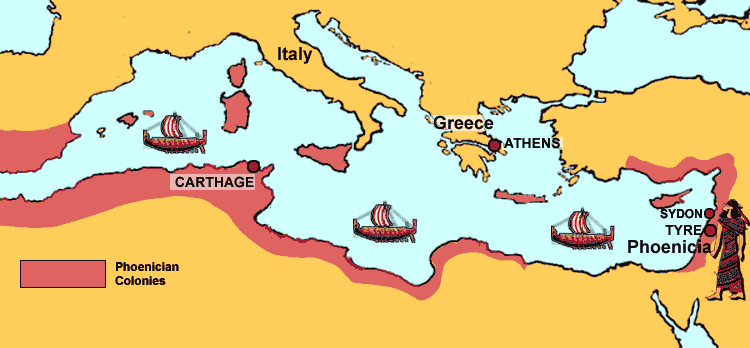 Amurru.” Hence, the Land of Amurru from Egyptian texts, and the other name, the Land of Canaan is a biblical name coded in allegory. The Land of Amurru and Land of Canaan would also be known under another name, “Land of the Phoenicians.” This designation had come down to us from the Greeks, and is confirmed in Assyrian inscriptions from about 1100 bc, where the term Amurru designated part of Syria and all of Phoenicia and Palestine, but no longer referred to any specific kingdom, language, or population.
Amurru.” Hence, the Land of Amurru from Egyptian texts, and the other name, the Land of Canaan is a biblical name coded in allegory. The Land of Amurru and Land of Canaan would also be known under another name, “Land of the Phoenicians.” This designation had come down to us from the Greeks, and is confirmed in Assyrian inscriptions from about 1100 bc, where the term Amurru designated part of Syria and all of Phoenicia and Palestine, but no longer referred to any specific kingdom, language, or population.
The Canaanites and Amorites were simply called the Phoenicians by the Greeks. As I mentioned above, the Canaanites were merchants, and it is well-known that the Phoenicians were some of the best merchants in the world who sailed their goods and commercial merchandise all over the world. The name Canaanite is their biblical name, Amorite their Egyptian name, and Phoenician their historical name as written by the Greeks. Today, we can simply call them the Phoenicians to keep it simple.
 The ancient home of the Phoenicians was called Phoenicia which is derived from the Greek word Phoinike, meaning “land of the purple,” for the purple Murex dye that this race of people were world-famous for its production. The color purple has long been associated with royalty since time immemorial. The Latin word for purple is purpureous, and the meaning is shining or splendid.
The ancient home of the Phoenicians was called Phoenicia which is derived from the Greek word Phoinike, meaning “land of the purple,” for the purple Murex dye that this race of people were world-famous for its production. The color purple has long been associated with royalty since time immemorial. The Latin word for purple is purpureous, and the meaning is shining or splendid.
As I also mentioned above, the Land of Canaan was a massive area that bordered from Sidon, and the Canaanites were simply called the Phoenicians by the Greeks. Phoenicians actually referred to themselves as Sidonians, which would coincide with the biblical story that the Canaanites live in a massive area that bordered from Sidon. After all, the capital city of the Phoenicians was named after Sidon, the first-born son of Canaan, son of Ham. Ham was one of the original occupants of Noah’s Ark and Noah’s youngest son.
In legend, Cydonia was founded by King Cydon, a son of Hermes and of Akakallis, the daughter of King Minos. As I mentioned above, Cydon or Sidon means “first-born.” Hence, the “First Born City of Canaan,” who in mythology was founded by King Cydon and dedicated to the Goddess, Cydonia who later became Athena, and later in Rome, Minerva. They are the goddesses of wisdom, courage, inspiration, civilization, law and justice, just warfare, mathematics, strength, strategy, the arts, crafts, and skill.
The Sidonians were also considered masters of science and magic. These same people had an ancient priesthood of the Phoenicians/Canaanites who were famous metal workers, sorcerers and magicians. In fact, they are the inventors of Western Civilization. I have written on this priesthood many times before in articles such as, Telchines: Magic Metal Workers and Children of the Sea, The Centaurs: Half Men and Half Horse Sons of God, The Origins of the Kohen Priesthood and Kohen: The Priest of Baal.
Just like the biblical Canaanites who we now know are the Phoenicians, their priesthood, the Telchines (Telknines, Telkhis, Telegonus, or Greek, Τελχῖνες) were a daemon tribe of artists, magicians, warriors and Vulcan Telchines: Magic Metal Workers and Children of the Seamerchants, who at one time resided on the island of Crete (Krete) in approximately the year 1600 BC. Crete is known in Greek mythology as the birthplace of the God, Zeus who was born there on a mountain called Mount Ida. Strabo had written, that these are the names of the various groups of daimones or demons known as the Curetes (Kuretes), Corybantes, Dactyls, Cabiri, and Telchines which are names that are often used interchangeably with one another. Plutarch had said, “that according to a divine nature and justice, the souls of virtuous men are advanced to the rank of daemons; and that from demons, if they are properly purified, they are exalted into gods, not by any political institution, but according to right reason.”
These priests were anciently known as the Koans (Coans) of Kos, and today they are called the Kohen (plural Kohanim). In 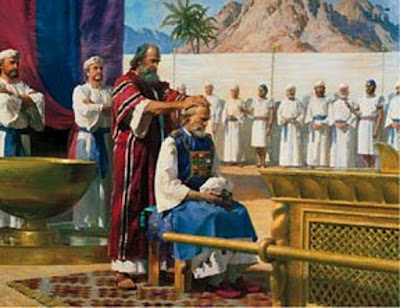 the Torah, a priest of Baal are referred to as Cohen or Kohen, and is the same in Phoenician, Hebrew, Punic, Ugaritic, Ethiopian, Arabic and Aramaic which are all related languages. Koan, Koan, Kohn, Kahn, Coin, Cohen, Kohen etc. are all essentially the same word. The word Kohen can also be connected to Crete via the city today called Chania, but once known a Khan-ia (Canea).
the Torah, a priest of Baal are referred to as Cohen or Kohen, and is the same in Phoenician, Hebrew, Punic, Ugaritic, Ethiopian, Arabic and Aramaic which are all related languages. Koan, Koan, Kohn, Kahn, Coin, Cohen, Kohen etc. are all essentially the same word. The word Kohen can also be connected to Crete via the city today called Chania, but once known a Khan-ia (Canea).
In the New Testament, Canaan is used only three times, twice in Acts when paraphrasing Old Testament stories, and once in the Exorcism of the Syrophoenician woman’s daughter. The latter story is told by both Matthew and Mark; Matthew uses the term Chananaia (Χαναναία), where Mark calls the woman Syrophoenician (Συροφοινίκισσα). Strong’s Concordance describes the term Chananaia as “in Christ’s time equivalent to Phoenician”. This name Chananaia corresponds with the modern spelling of Chania (Canea or Kanea), which is a city on the Holy Island of Crete in the Mediterranean Sea and home to the Phoenicians. Chania is the site what is often dubbed as that of the Minoan settlement that the Phoenicians and Greek Hellenes called Kydonia which is known biblically as Sidon, and as I mentioned above, the Phoenicians called themselves Sidonians. The name Kydonia (Sidonia, Chania, Canea, Khania or Kanea) is Greek for quince which is a fruit known by the name of the genus Cydonia in the family Rosaceae (
This same quince fruit is said by some historians to be the fruit in the book of Genesis that does not name the specific type of the fruit that Adam and Eve ate from the tree of knowledge of good and evil in the garden of Eden. Some ancient texts suggest Eve’s fruit of temptation might have been a quince. In Plutarch‘s Lives, Solon is said to have decreed that “bride and bridegroom shall be shut into a chamber, and eat a quince together.” Among the ancient Greeks, the quince was a ritual offering at weddings, for it had come from the Levant with Aphrodite and remained sacred to her. Plutarch reported that a Greek bride would nibble a quince to perfume her kiss before entering the bridal chamber, “in order that the first greeting may not be disagreeable nor unpleasant” (Roman Questions 3.65). It was with a quince that Paris awarded Aphrodite. It was for a golden quince that Atalanta paused in her race.(wikipedia)
It makes sense that the story of the Canaanites and the Land of Canaan would be centered around the island of Crete which is well-known by almost all historians as the birthplace of Western Civilization. It also makes perfect sense that ancient texts would refer to the fruit of tree of knowledge of good and evil in the garden of Eden as the quince, and that their homeland would be Crete which is the original home of the Phoenicians who we know as the biblical merchant Canaanites, and that Crete is the biblical Land of Canaan.
Pliny had said the Cretans were called Curetes, and Herodotus had said that the Curetes had come to Crete with the Phoenician Prince Cadmus. In Latin Crete is called “Cappadocia or Cappadocian”, who were known as a large tribe of the Magi and are also called fire-kindlers. Hence, the Kohen (plural Kohanim) who in the Torah, a priest of Baal are referred to as Cohen or Kohen. Herodotus tells us that the name of the Cappadocians was applied to them by the Persians, while the Greeks had simply called them, “Syrians” or “White Syrians.” The Latin name of the Cappadocians were known as “the men of Caphtor”, who we can call today, “the men of Crete or the Phoenicians,” and known in the bible as Canaanites.
33rd degree Freemasonic philosopher Manly P. Hall said in his book, The Lost Keys of Freemasonry – “These were the immortals to whom the term ‘phoenix’ was applied, and their symbol was the mysterious two-headed bird, now called an eagle, a familiar and little understood Masonic emblem.”

Moe is the founder of GnosticWarrior.com. He is a father, husband, author, martial arts black belt, and an expert in Gnosticism, the occult, and esotericism.

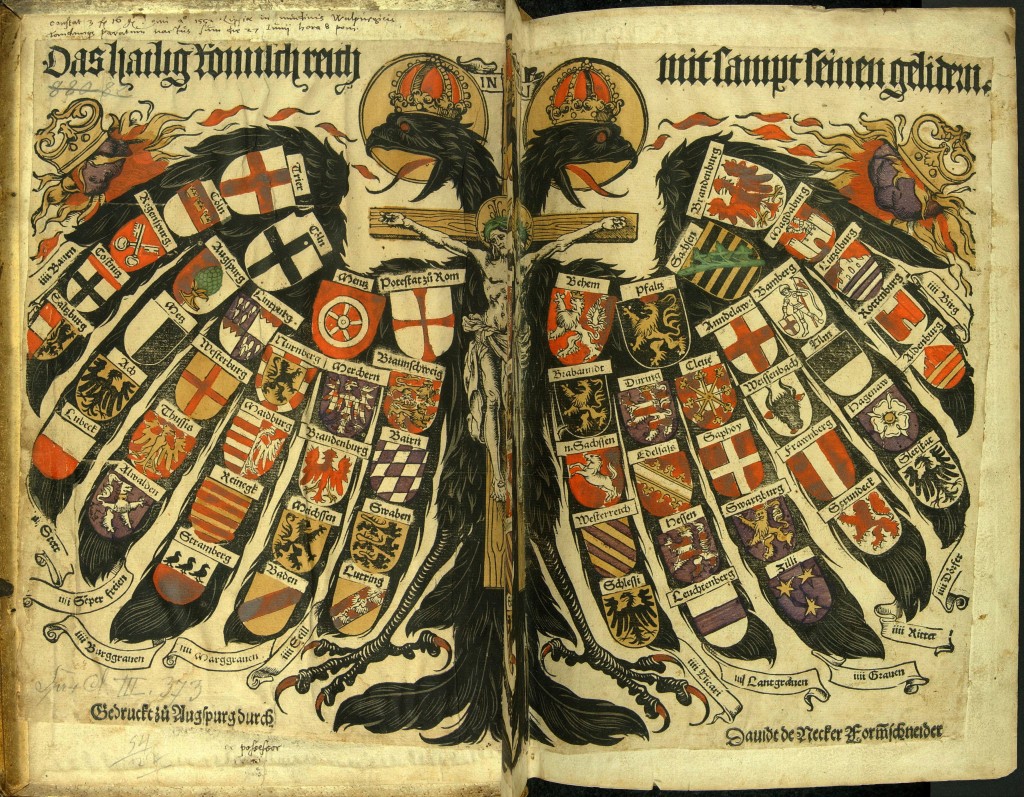
![How Ethelwald, successor to Cuthbert, leading a hermit’s life, calmed a tempest by his prayers when the brethren were in danger at sea [687-699 A.D.] | Book 5 | Chapter 1 How Ethelwald, successor to Cuthbert, leading a hermit’s life, calmed a tempest by his prayers when the brethren were in danger at sea [687-699 A.D.] | Book 5 | Chapter 1](https://www.gnosticwarrior.com/wp-content/plugins/contextual-related-posts/default.png)
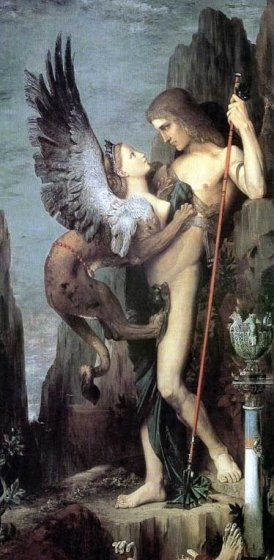

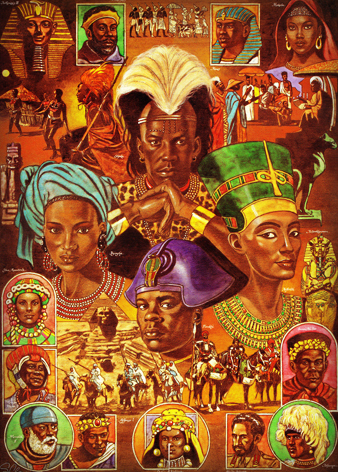

Do you ever do research by looking at pictures? I have a very old piece of carved furniture…two carvings of knight’s sitting atop their horses…hand signals…templar symbols everywhere…broken scrolls passing on a secret…flaming chalice, another chalice with apples, another upside down chalice…nine pillars, two of them hollow….and that is just the beginning. There is so much more. I need help deciphering it. Can you suggest someone?